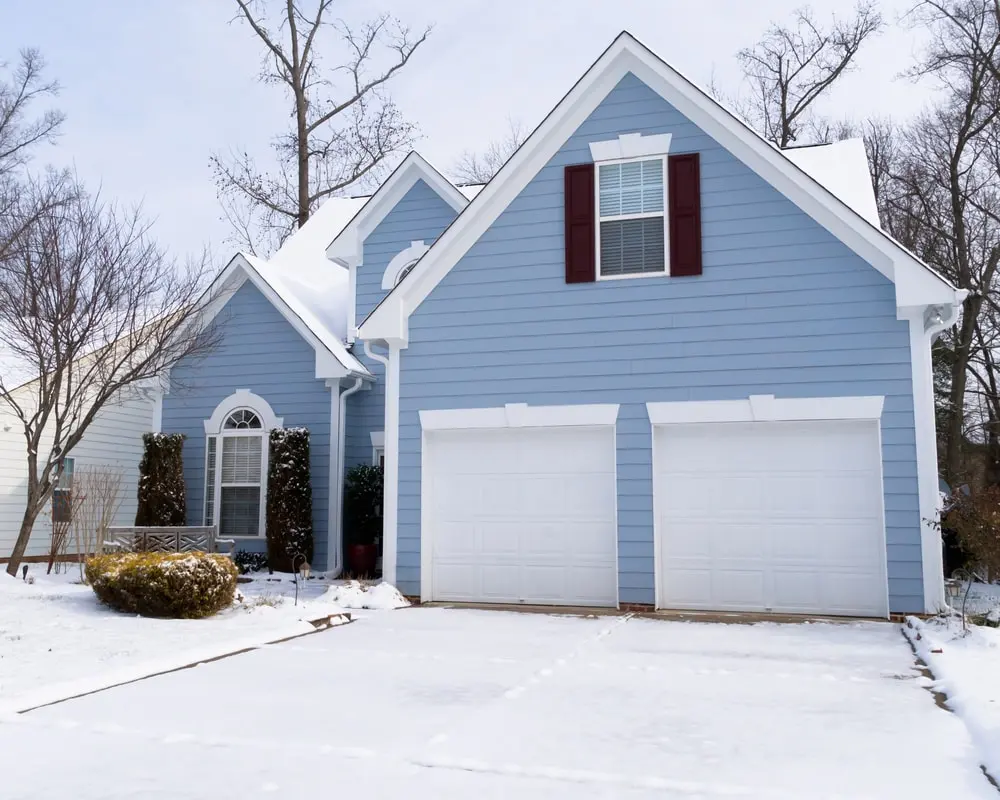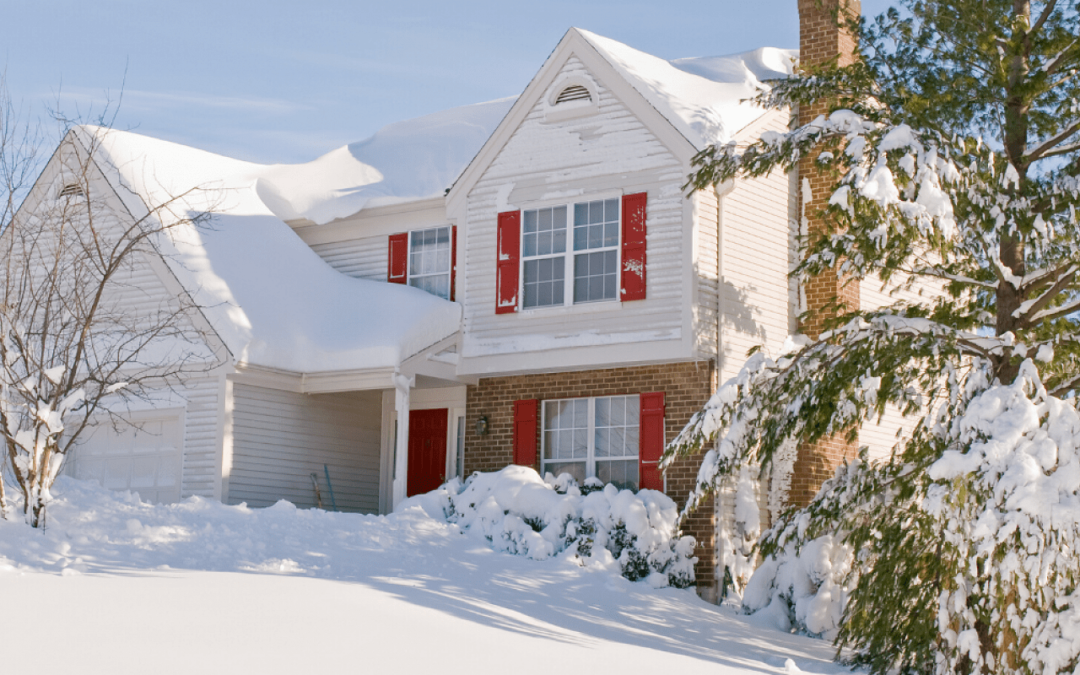5 Common Issues for Painting Your House in Winter
Winter may not be the most popular time for house painting, but it can actually be an ideal time to give your home a fresh new look. There are several benefits to painting your house during the winter months. First and foremost, it can be more cost-effective. Many painting contractors offer discounts during the winter season, as they have fewer projects and are looking to keep their crews busy. Additionally, the colder temperatures can actually help paint dry faster and adhere better to surfaces.
However, winter painting does require special considerations. The low temperatures, moisture and humidity, shorter days, and frozen surfaces can all pose challenges when it comes to painting. It’s important to understand these issues and take the necessary precautions to ensure a successful paint job.
Key Takeaways
- Choosing the right paint is crucial for successful winter house painting.
- Low temperatures can affect the paint’s ability to dry and adhere properly.
- Moisture and humidity can cause paint to blister and peel.
- Shorter days and less sunlight can impact the painting schedule and drying time.
- Hiring a qualified contractor is essential for a successful winter painting project.
The Importance of Choosing the Right Paint
Choosing the right paint is crucial for any painting project, but it becomes even more important when painting during the winter. There are different types of paint available, such as oil-based and latex-based paints, and each has its own advantages and disadvantages.
For winter painting, it is recommended to use latex-based paints. These paints are more resistant to temperature fluctuations and can handle the expansion and contraction that occurs with changing temperatures. Oil-based paints, on the other hand, can become brittle in cold temperatures and may crack or peel.
Another important factor to consider when choosing paint for winter painting is the level of VOCs (volatile organic compounds). VOCs are chemicals that are released into the air as paint dries, and they can have harmful effects on indoor air quality and human health. It is best to choose paint with low VOCs or even zero VOCs to minimize these risks.
Common Issue #1: Low Temperatures
One of the main challenges of winter house painting is dealing with low temperatures. Cold temperatures can affect both the application and drying of paint. When it’s too cold, paint can become thick and difficult to work with, making it harder to achieve a smooth finish. It can also take longer for paint to dry, which can lead to issues such as sagging or running.
To overcome these challenges, there are a few tips for painting in low temperatures. First, it’s important to choose a paint that is specifically formulated for cold weather application. These paints are designed to remain workable at lower temperatures and have additives that help them dry faster. It’s also helpful to warm up the paint before using it by placing the cans in a warm room or using a paint warmer.
Common Issue #2: Moisture and Humidity
Moisture and humidity can also pose challenges when painting during the winter months. Excess moisture in the air can affect the adhesion of paint to surfaces and can also slow down the drying process. Painting in high humidity conditions can lead to issues such as blistering, peeling, or bubbling.
To avoid these problems, it’s important to choose a dry day for painting and avoid painting during rain or snow. If you’re painting indoors, it’s helpful to use dehumidifiers to reduce moisture levels in the air. Proper surface preparation is also crucial, as moisture can seep into cracks or gaps and affect the adhesion of paint.
Common Issue #3: Shorter Days and Less Sunlight
During the winter months, days are shorter and there is less sunlight available. This can affect the drying time of paint, as sunlight helps paint cure and harden. Without sufficient sunlight, paint may take longer to dry and may not fully cure, leading to issues such as tackiness or smudging.
To overcome this challenge, it’s important to schedule painting during the warmest part of the day when there is more sunlight available. It’s also helpful to use artificial lighting to provide additional light and heat during the painting process. This can help speed up the drying time and ensure a proper cure.
Common Issue #4: Frozen Surfaces

Frozen surfaces can be a major challenge when it comes to winter house painting. When surfaces are frozen, paint may not adhere properly and can easily peel or chip off. It’s important to ensure that surfaces are thawed and at the proper temperature before painting.
To paint on frozen surfaces, it’s recommended to use specialized paint products that are designed for cold weather application. These paints have additives that help them adhere to frozen surfaces and can withstand the expansion and contraction that occurs with changing temperatures. It’s also important to thaw surfaces properly before painting by using heat sources such as heaters or heat guns.
Common Issue #5: Choosing the Right Contractor
Choosing the right contractor is crucial for a successful winter house painting project. It’s important to choose a contractor with experience in winter painting, as they will be familiar with the challenges and know how to overcome them. They will also have the necessary equipment and tools to handle the unique requirements of winter painting.
When choosing a contractor, it’s important to check references and ask about their winter painting process. A reputable contractor will be able to provide references from previous winter painting projects and will be transparent about their methods and techniques. It’s also helpful to ask about any warranties or guarantees they offer for their work.
ColorKraft Homes: Expert Winter Painting Services
ColorKraft Homes is a leading provider of winter painting services. They have extensive experience in painting homes during the winter months and are familiar with the challenges that come with it. Their team of skilled painters is trained in specialized techniques for winter painting and uses high-quality paint products that are specifically formulated for cold weather application.
ColorKraft Homes takes a comprehensive approach to winter painting, starting with thorough surface preparation to ensure proper adhesion of paint. They also take into account factors such as temperature, humidity, and sunlight availability to schedule painting at the optimal times. Their team is equipped with the necessary tools and equipment to handle any winter painting project, big or small.
ColorKraft Homes: High-Quality Paint Products

In addition to their expertise in winter painting, ColorKraft Homes also uses high-quality paint products that are specifically formulated for cold weather application. They work with reputable paint manufacturers that produce paints with low VOCs and excellent adhesion properties.
Using high-quality paint products is crucial for a successful winter painting project. These paints are designed to withstand the challenges of low temperatures, moisture, and frozen surfaces. They provide a durable and long-lasting finish that can withstand the harsh winter conditions and protect your home for years to come.
Tips for Successful Winter House Painting
To recap, winter house painting can be a cost-effective way to give your home a fresh new look. However, it requires special considerations due to the challenges posed by low temperatures, moisture and humidity, shorter days, and frozen surfaces. By choosing the right paint, preparing surfaces properly, and following the tips discussed in this article, you can ensure a successful winter painting project.
Additional tips for successful winter house painting include properly preparing surfaces by cleaning and priming them before painting. This will help ensure proper adhesion of paint and a smooth finish. It’s also important to use the right tools and equipment for the job, such as brushes or rollers that are designed for cold weather application.
With the right preparation, the right paint, and the right contractor, you can achieve a beautiful and long-lasting paint job even during the winter months. So don’t let the cold weather deter you from giving your home a fresh new look – embrace the benefits of winter house painting and transform your home into a cozy retreat.
If  you’re planning to paint your house during the winter months, it’s important to be aware of the common issues that may arise. From temperature fluctuations to moisture problems, there are several factors that can affect the outcome of your painting project. To ensure a successful and long-lasting paint job, it’s crucial to understand how to address these challenges. In a related article by Painter Near Me, they provide valuable insights into the 5 Common Issues for Painting Your House in Winter. They offer expert advice on how to overcome these challenges and achieve a beautiful finish. To learn more about their house painting services, you can visit their website at House Painter. Additionally, if you’re specifically looking for professional painters in Orange County, you can check out their services at Orange House Painters or if you reside in Laguna Woods, their team of skilled painters can assist you with your painting needs at Laguna Woods Home Painters.
you’re planning to paint your house during the winter months, it’s important to be aware of the common issues that may arise. From temperature fluctuations to moisture problems, there are several factors that can affect the outcome of your painting project. To ensure a successful and long-lasting paint job, it’s crucial to understand how to address these challenges. In a related article by Painter Near Me, they provide valuable insights into the 5 Common Issues for Painting Your House in Winter. They offer expert advice on how to overcome these challenges and achieve a beautiful finish. To learn more about their house painting services, you can visit their website at House Painter. Additionally, if you’re specifically looking for professional painters in Orange County, you can check out their services at Orange House Painters or if you reside in Laguna Woods, their team of skilled painters can assist you with your painting needs at Laguna Woods Home Painters.
Newport Beach Painting Contractors | Orange Painting Contractors | Orange County Painting Contractors | Santa Ana Painting Contractors | Irvine Painting Contractors |
FAQs – Painting Your House in Winter

What are the common issues when painting your house in winter?
The common issues when painting your house in winter are low temperatures, high humidity, shorter daylight hours, frozen surfaces, and slow drying time.
What is the ideal temperature for painting your house in winter?
The ideal temperature for painting your house in winter is above 50°F (10°C) and below 90°F (32°C).
How does high humidity affect painting in winter?
High humidity affects painting in winter by slowing down the drying time of the paint, which can lead to issues such as cracking, peeling, and blistering.
What should you do if the surface you want to paint is frozen?
If the surface you want to paint is frozen, you should wait for it to thaw completely before painting. Painting on a frozen surface can cause the paint to crack and peel.
How can you speed up the drying time of paint in winter?
You can speed up the drying time of paint in winter by using a paint additive or by using a space heater or dehumidifier to create a warm and dry environment. However, be cautious when using these methods and follow the manufacturer’s instructions carefully.
Page design by Website Design and Marketing Near Me


